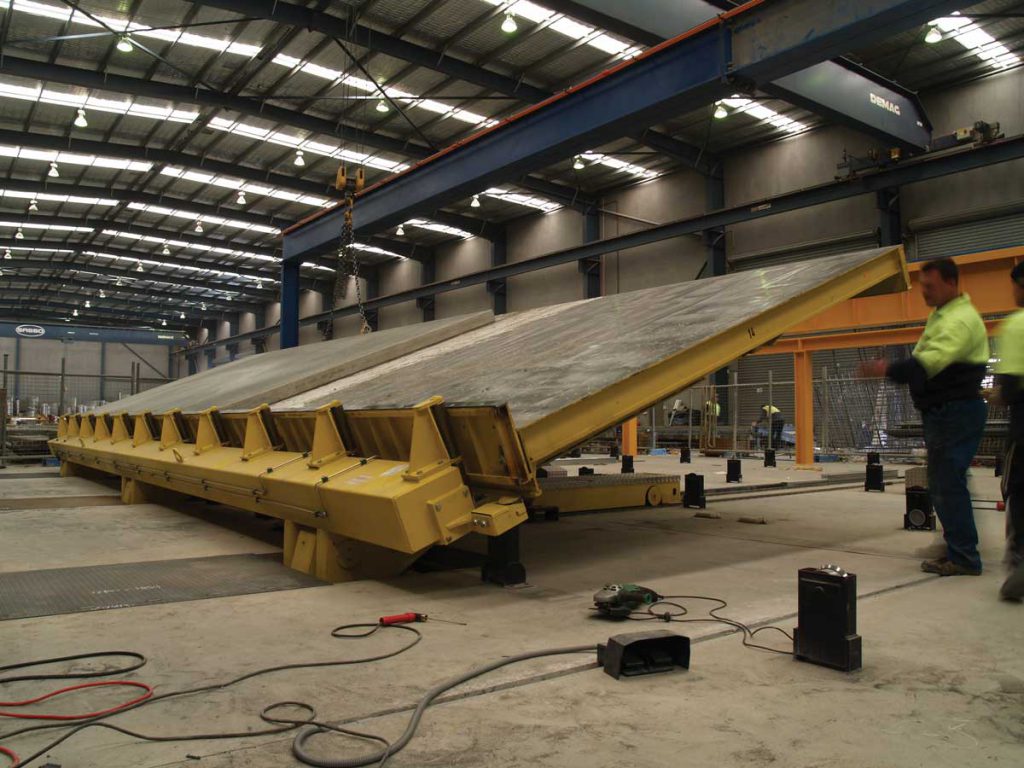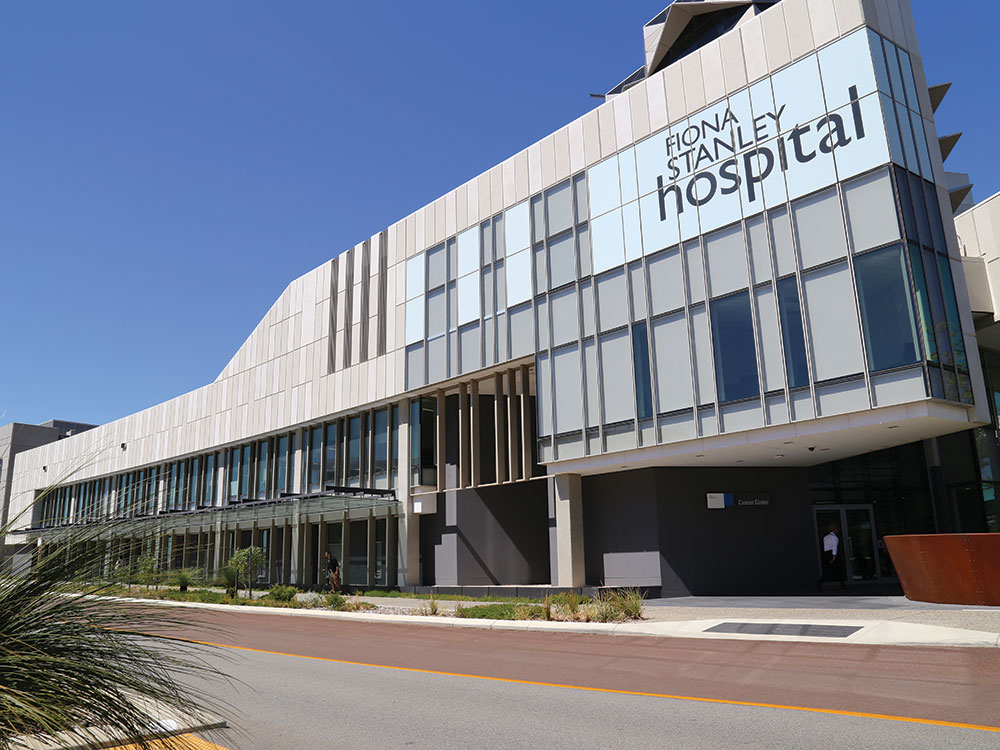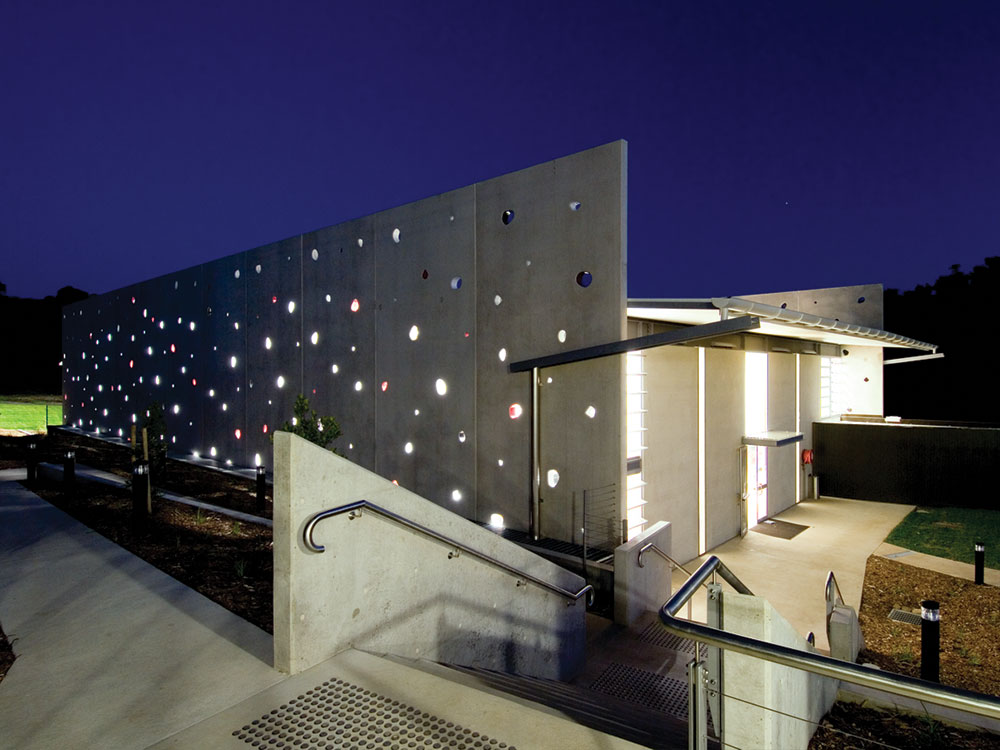PRECAST CONCRETE... BUILDING A SUSTAINABLE AUSTRALIA
SARAH BACHMANN, CEO, NATIONAL PRECAST CONCRETE ASSOCIATION AUSTRALIA, THE PEAK BODY FOR THE AUSTRALIAN PRECAST CONCRETE INDUSTRY, MAKES THE CASE FOR PRECAST CONCRETE AS A VERSATILE, ECONOMIC, CLEAN AND ENVIRONMENTALLY FRIENDLY MATERIAL WITH A SOLID TRACK RECORD AND A ROBUST FUTURE.
Precast concrete is a high performance construction material that provides significant benefits in terms of quality, design, construction, strength, safety and sustainability. Precast offers substantial benefits for every facet of a project; for developers, builders, architects and engineers.
The range of precast products available is constantly evolving. For civil projects, precast products can include arches, bridges, culverts, noise walls, pipes, jetties and boardwalks, retaining walls, tanks, safety barriers, towers and tunnels. For building construction, both commercial and residential, precast is used for a range of elements including walls, floors, beams, columns, stairs, seating plats, lift and service cores. In landscaping, precast concrete is increasingly used for bollards, outdoor furniture, planters, monuments and signs. And there are many more applications for this highly adaptable material.
DESIGN VERSATILITY
It’s not surprising that many precast projects have won awards, given that precast concrete gives architects the freedom to design and produce highly bespoke projects to bring their vision to life. Controlled factory conditions and high precision steel moulds allow for the manufacture of an accurate, high quality product with sharp detail and the potential for elaborate and highly articulated finishes. Super versatile, precast is available in a limitless range of colours, sizes, shapes, textures and finishes. Colours can be integrated into the concrete mix, or can be applied using stain or paint. For the more architecturally ambitious projects, moulds can be custom made from a range of materials to achieve any shape and form liners can be used to pattern the surface. Elements can be polished, blasted, etched, or honed in the factory, or images can be etched into the surface.
OFFSITE MANUFACTURE RESULTS IN JUST-IN-TIME, HIGH QUALITY ELEMENTS
Offering quality and finishes that can’t usually be achieved when concrete is poured on site, precast concrete products are manufactured in either re-useable or one-off moulds, in specially equipped factories.
Elements are cast and cured in the factory environment, which means site works can occur while the precast is being manufactured. Offsite manufacture also allows the incorporation of advanced mix designs to achieve specific outcomes, and ensures quality is easily controlled and monitored. Manufacturing precast concrete components offsite results in a reliable supply of elements, which are not dependent on fine weather and can be delivered just in time to a tight project deadline.
National Precast members have a proven track record, with the experience, capacity, knowledge, skills and facilities to supply precast elements at the right time, to the highest quality.
TRANSPORT AND INSTALLATION
All National Precast members work to comply with all relevant legislation, Australian Standards and Codes of Practice.
When a building or civil project uses precast elements, elements are transported to the construction site on trucks. There is no requirement on site for scaffolding, formwork or allocating space for concrete elements to be stored. Once on site, cranes are used to immediately lift and install components.
For a building, experienced erection crews can erect an entire frame,
including walls, floors, columns, beams and roof, in times way faster than what traditional on site construction methods, and most other building materials, offer. Its impressive speed of erection also means that subsequent trades can commence their works earlier.
“The range of precast products available is constantly evolving.” Sarah Bachmann
In terms of civil projects such as bridges, the use of precast elements translates not only to higher quality outcomes and better aesthetics, but also to faster construction, which reduces inconvenience or the necessity of detours for motorists.
In both cases, offsite manufacture significantly improves workplace health and safety. A precast project means less time on site, less equipment, less third party trades and a cleaner, safer site with less waste and less disruption to surrounding properties. In the factory, workplace health and safety is carefully planned and monitored.
PRECAST… BUILDING A SUSTAINABLE AUSTRALIA
Precast concrete is manufactured locally using local products and utilises some of the industry’s most ecological and economical practices. The incorporation of recycled materials and the use of considerably fewer raw materials results in a huge reduction in construction waste.
Precast concrete is an inert substance that does not emit or give off any gases or compounds. In fact it actually absorbs unwanted compounds such as carbon dioxide. Protective photocatalytic coatings can be applied to enable the precast to self-clean and for additional environmental benefit. Precast does not attract mould or mildew and because it’s termite and vermin proof, it removes the need for chemical spraying.
Precast concrete speeds up construction times and therefore considerably reduces the environmental impact of a build, making it more cost effective and less disruptive to the neighbourhood many other construction materials.
In addition, precast concrete is a winner when it comes to sustainable design. Its high thermal mass can be used to a building’s and its inhabitants’ advantage, enabling the building to absorb, store and later radiate heat and minimise temperature fluctuations. This passive solar quality allows natural heating in winter and cooling in summer, thereby reducing the environmental and economic costs of artificial heating and cooling.
Precast’s inherent durability and strength also ensure it lasts over time. Longer lasting structures are more sustainable because they can be re-used, extended or refitted internally rather than simply being demolished. Examples of precast concrete structures that are hundreds and even thousands of years old are well documented. Precast concrete actually gains strength as it ages; it won’t shrink, distort or move and will not deteriorate with exposure to climatic change. Precast concrete’s durability makes it resistant to natural disasters such as fires, floods and earthquakes.
PRECAST FOR THE FUTURE
Precast is proven technology with a long history and an exciting, high-tech future. The use of precast in construction is now widely regarded as a safe, economic, durable, structurally sound and architecturally versatile form of construction. Members of National Precast are highly regarded, experienced and have a proven track record in the Australian construction industry. They invest in research and development to continually improve their products and services.■










